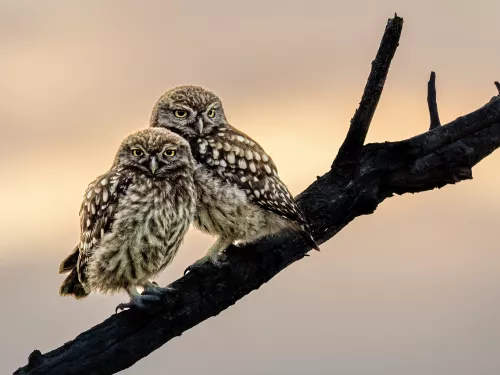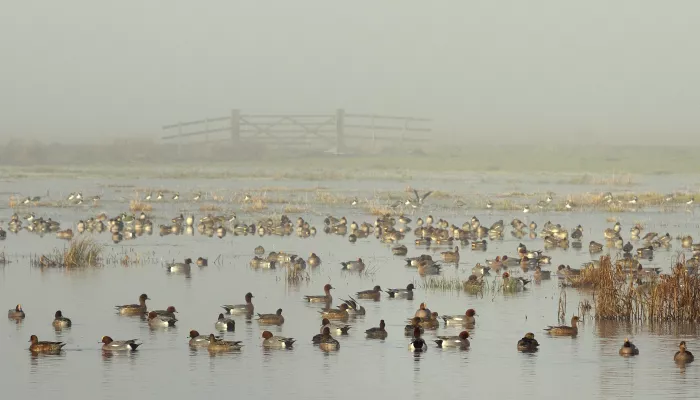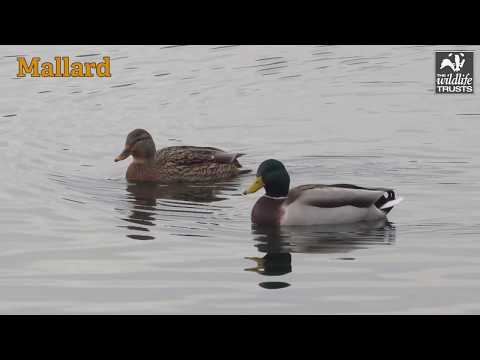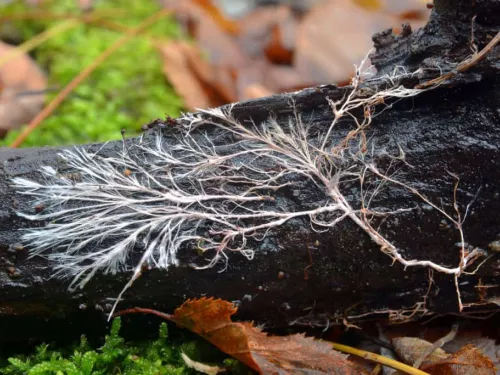
If you go down to the woods today – 9 surprising animals to look out for amongst the Kentish trees
Volunteer Matt Huggins explores some of the lesser-known but still fascinating animals that grace our woodlands.

The best time for seeing dabbling ducks is in winter, when hundreds of thousands arrive from breeding grounds across Northern Europe and Russia, though most can be seen regularly in smaller numbers throughout the year. We’ve pulled together an introduction to the dabbling ducks you’re most likely to see, with a quick guide on how to recognise both males and females.
Top tip: a useful way of identifying ducks (especially females) is to look at the speculum – this is a coloured patch on the secondary flight feathers, which are the feathers at the trailing edge of the wing, closest to the body. The speculum colour is often distinctive and can easily be seen in flight, and often seen on swimming or standing birds.
The classic duck. Males have a yellow bill and a green head, separated from the brown breast by a thin white collar. The body is mostly grey, with a black rear. The black middle tail feathers curl upwards. The speculum is dark blue with a white border.
Females are a streaky brown all over. They have a patchy orange and black bill (see gadwall for comparison). Like males, they have a dark blue speculum with broad white borders. This is obvious in flight and can sometimes be seen when the duck is on the water or ground.
Slightly smaller and slimmer than a mallard. Males are mostly grey, with a wavy pattern (known as vermiculations) that is strongest on the breast. They have slightly browner heads, brown feathers on the back and a black rear. The bill is greyish-black and the speculum is small and white.
Females are very similar to female mallards, though slightly smaller and slimmer. The best features to look for are the small white speculum on the wing (much smaller than in male gadwalls) and the bill, which is dark with a neat orange stripe along each side (patchier orange and black in mallard).
An elegant duck, with a small brown head, a long neck that's brown at the back and white at the front, and grey body. The black middle feathers of the tail are very long. The speculum is dark green, with a white border at the back and a rusty border at the front. The bill is black with blue sides.
Like a slim, elegant mallard, with a long, slender neck and long, pointed tail feathers (not as long as in male). The head is a richer brown than the greyish body, the bill is dark grey and the speculum is bronze-brown with a thick white border at the trailing edge and a narrow white border at the front.
Similar size to a mallard. Males have a glossy green head, a yellow eye and a huge, broad dark bill. The belly and sides are a rich chestnut brown and the breast is white. The speculum is green, with a white border at the front and a large blue patch on the fore wing. Shovelers often feed in pairs or groups, spinning around each other.
Resembles a female mallard, but with a huge, broad bill (paler than the male's). The speculum is a dull green (blue in mallard), with a white border at the front and no white on the trailing edge (mallard has a white trailing edge).
Our smallest duck (about 2/3 the size of a mallard). The head is chestnut with a yellow-bordered green patch on each side. The body is grey with a horizontal white line running along it, and a yellow patch either side of the rear. The speculum is bright green.
A very small, streaky brown duck, with a small, dark bill that often has orange towards the base. The speculum is bright green, with a broad white bar in front of it and a narrower one at the trailing edge of the wing.
Smaller than a mallard, with a short neck and small, blue, black-tipped bill. They have a round, chestnut head with a creamy-yellow patch on the forehead. The body is mostly grey, with a white belly, pinkish breast and black rear. The speculum is green with a large white patch in front of it. Often gives a whistling call.
Females are mostly a mottled brown, though the shades can vary from greyish-brown to a richer red-brown. They have a small, round head and short, blue bill with a black tip. The belly is white and the speculum is dark and they lack the large white patch of the male. Often in large groups, grazing.


Volunteer Matt Huggins explores some of the lesser-known but still fascinating animals that grace our woodlands.

Volunteer Matt Huggins explores the underground secrets of mycorrhizal networks and how they help trees to communicate with one another.

You hear “shark”, you think Jaws. Sadly, this is true for many of us… but then who hasn’t been slightly traumatised by Steven Spielberg’s enduring epic?